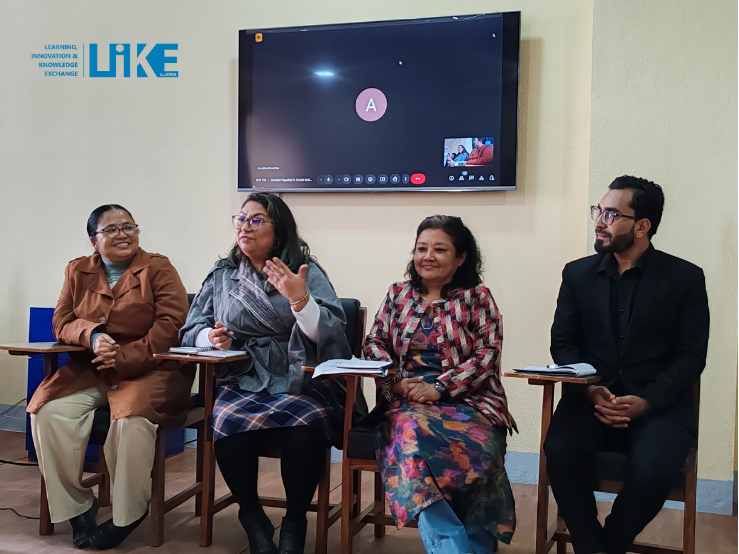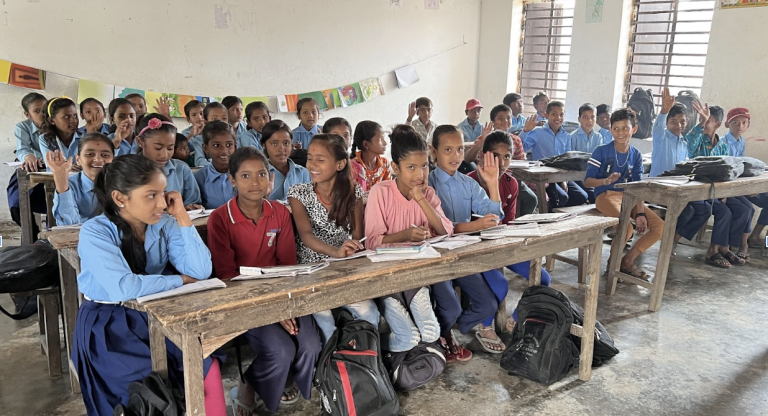By: Binayak Krishna Thapa
January 1st, 2025
When we think about the concept of “well-being,” we inevitably question our moral and ethical values, shaped by various influences such as religion, political stances, cultural beliefs, and family backgrounds. These diverse values and systems impact our thoughts toward the notion and understanding of “Well-Being.” Such multiplicity of values and systems promoting the notion of “Well-Being” is rooted in the works of exemplars, the “Sage,” “Saint,” and “Guru”; to identify a few are Buddha, Confucius, and Aristotle, belonging to the oriental as well as occidental schools of thoughts. Since then, humanity, on its own accord, has nurtured, harnessed, and harvested these values, reproducing them as per the time we belong to with the available intellect and resources around us.
To get a nuanced insight into “well-being,” let’s explore what each exemplar had to say and how the values embedded in the value system have been transformed over time. In simple terms, Buddha claimed human well-being is achieved through the cultivation of compassion, moderation, and mindfulness. At the same time, Confucius proclaimed altruism, humanness towards others, family, and obedience to reach the end of well-being. Yet, for Aristotle, it was ‘eudaimonia,’ which can be understood as a flourishing life, and the pathway was to harness good attitudes, habits, and behaviors to be a good citizen. These three great ‘saints’ of their own time regarded virtue and claimed virtue ethics as an approach to well-being.
Their thoughts have immensely influenced religious ethics and values across various faiths. For instance, do Judaism, Christianity, Islam, Hinduism, Buddhism, Jainism, and Sikhism not promise their followers eternal well-being, salvation, moksha, and nirvana in return for good deeds on Earth, following pathways each religion has paved. Our available pathways to well-being are not confined to just religious or moral ethics. On our human wellness platter, we have some secular ethics that also contribute to our understanding of well-being. These are again contributed by the great thinkers of the ‘Enlightenment Era,’ philosophers such as Immanuel Kant, who claims “duty ethics,” i.e., the duty to adhere to rational principles. He claims to understand the universal standard of behavior, known famously as the ‘Categorical Imperative,’ a message for an individual to act for their own and societal well-being through the generally applicable and universal principles. Yet other pathways are there, such as ‘Utilitarianism’ propounded by Jemery Bentham, the good principle known commonly as ‘greatest happiness for the greatest number of people,’ a simplistic understanding that society should maximize the ‘utility’ of the people to achieve the well-being of all. Conversely, we can also find an alternative to this path, known as the libertarianism approach to well-being, i.e., freedom to choose one’s life course.
The progress of humanity lies in this foundational understanding of well-being. The notion is continually evolving, with various possible paths. However, we have selected one for all to place ourselves on the same ship, sailing towards better being and doing, i.e., the global culture of human rights. All nations united in considering the idea of human rights agree that we possess fundamental rights simply because we are human beings. This matters at all levels, individual, societal, and the nation-state to global. It is at this point, that we understand it matters; if rights to well-being are true, let us ignite a spark to focus on the question of “What to the well-being of children?”
It has been a long endeavor, with various actors, agencies, and organizations spanning political, non-governmental, civil society, philanthropy, community, nation-state, regional, and global levels painstakingly contributing to establishing and enhancing child rights. Yet, what about the well-being of children in homes of the haves or the have-nots, homeless or care institutions, in schools or out of schools, in community or nation as a whole? Do these efforts impact children’s well-being?
Children’s Well-Doing and Being
If we were asked a simple normative question here, should children be doing and being well? The immediate answer would undoubtedly be ‘yes.’ We find no good reason for the illness of our children because our children’s well-being matters; their well-doing and well-being counts, and we all are to be responsible and accountable for its promotion and protection. Now, consider another important question: what constitutes children’s well-being? Is it their level of cheerfulness and happiness, the provision of material resources they need, or the nutrition status, care, and clothing in their possession? These questions will never end, but we can derive from these never-ending questions and answers that their well-being is to be accounted for by multiple good beings and doings. The better being and doing for each child is such that they can potentially access basic resources, welfare, and environment for their present and future. These are the complexities of the notion of ‘well-being,’ which embeds abstractness and concreteness while applying and implying for adults and more for children.
A young research team at Kathmandu University School of Arts, engaged in Learning, Innovation, and Knowledge Exchange (LIKE), began an endeavor to explore, examine, and understand children’s well-being. This endeavor is part of a research award granted by GPE KIX- IDRC endeavor to strengthen the public education system through ‘Promoting Gender Equality and Social Inclusion in schools, building on what children value and aspire to do and be.’ The researchers start with navigating the composite elements of children’s well-being through desk review by exploring existing and established definitions, conceptualizations, dimensions, and indicators that represent ‘Well-Being.’ The existing literature suggests that children’s well-being comprises a broad range of ideas that could be packed in a list form, where each list has a purpose for defining, examining, and evaluating children’s well-being.
Currently, there are almost twenty-one such lists, each list claiming to indicate different forms of children’s well-being, generally for assessment and evaluation purposes. A few of these lists address child poverty, child well-being, gender equality, social inclusion, child nutrition, and more. The research team at LIKE selected the most recurring indicators among the existing twenty-one list and attempted to create a tailored list for its working purpose for the above-mentioned grant project. The selected indicators are shelter and environment, education, aspiration, gender equality and social inclusion curriculum, respect, nutritional status, life and physical health, bodily integrity, love and care, freedom from economic and non-economic exploitation, ability to understand and interpret, mental well-being, to be able to plan, imagine and think, social relations, religion and identity, spirituality, mobility, time autonomy, participation, leisure activities, and personal autonomy. These indicators or themes provide us a space to evaluate the experiences, lives, and the children’s being and doing. Given these indicators, the researchers conducted a workshop for children at 13 schools separately for girls and boys of various ages between 6-14 to examine their understanding of, the importance of, and examples of these themes. Our research journey sought to explore what counts as children’s well-being through their voices and what they value and aspire to do and be.
Note: This is the introductory blog of our blog series, where we share how these indicators were developed. In the upcoming blogs, we will explore what these indicators mean to children, their understanding of them, and the value they place on them. We aim to bridge the gap between theoretical frameworks and children’s lived experiences by amplifying their voices and ensuring that well-being is defined and assessed in a way that truly reflects their realities.



